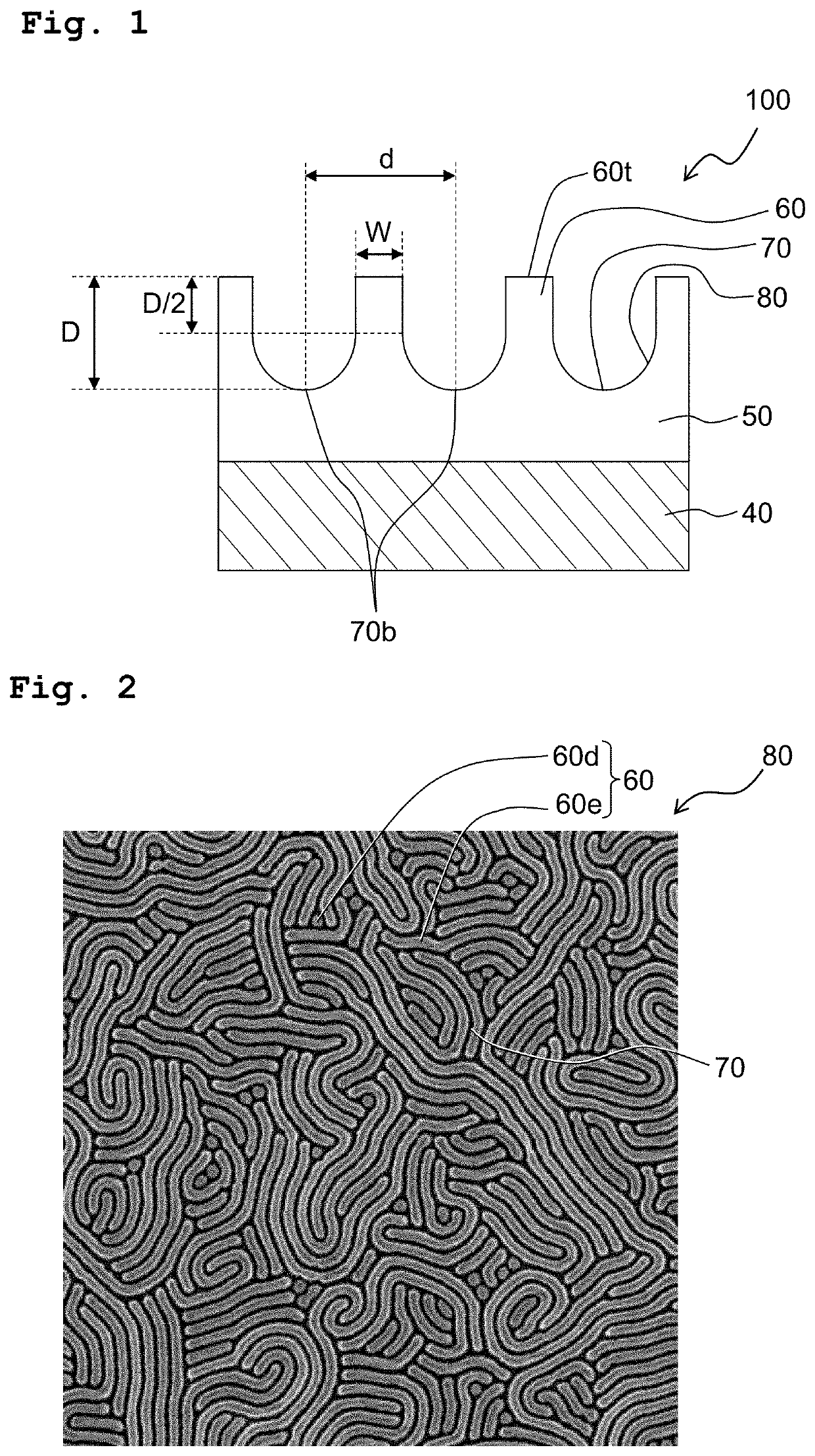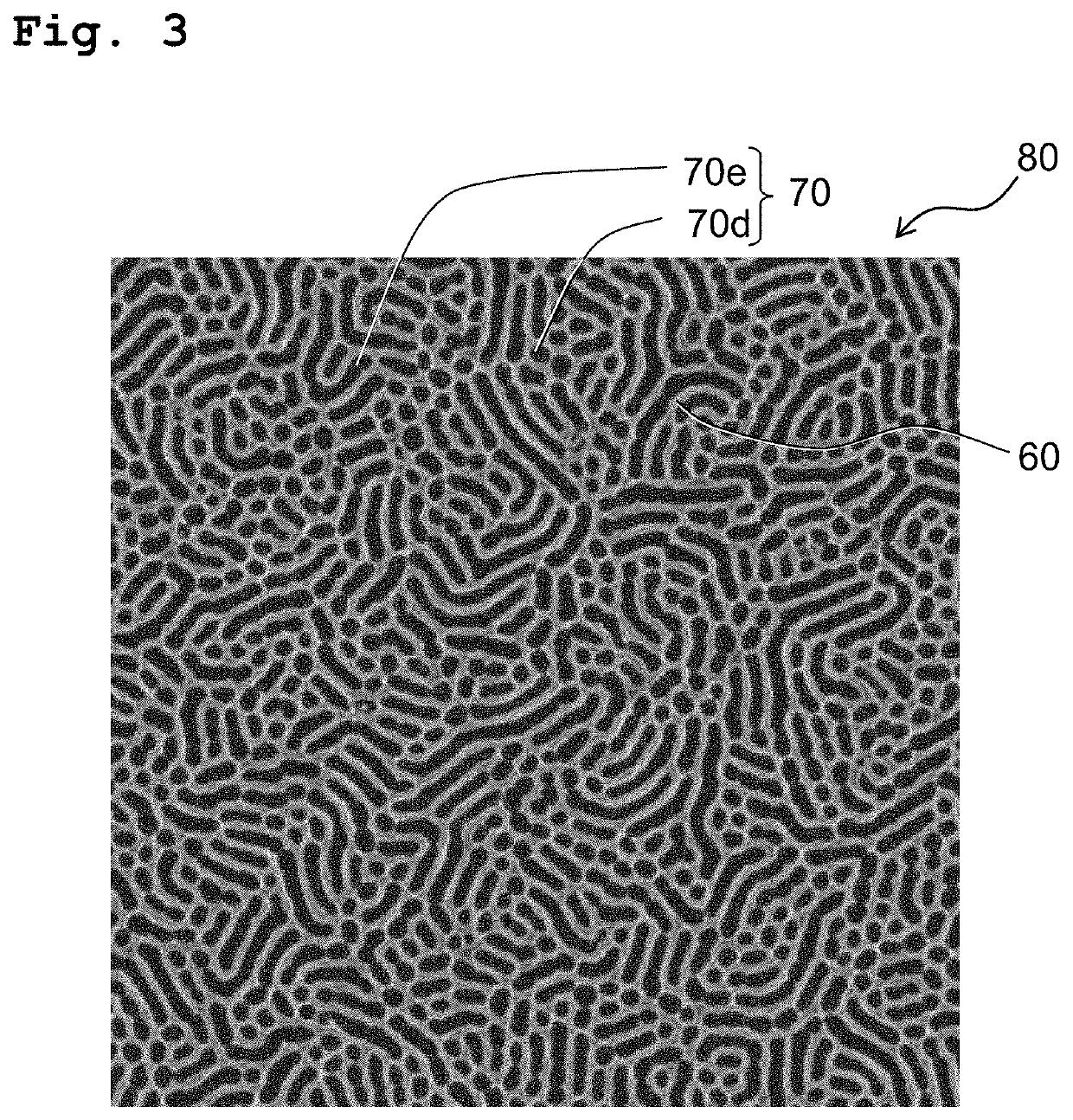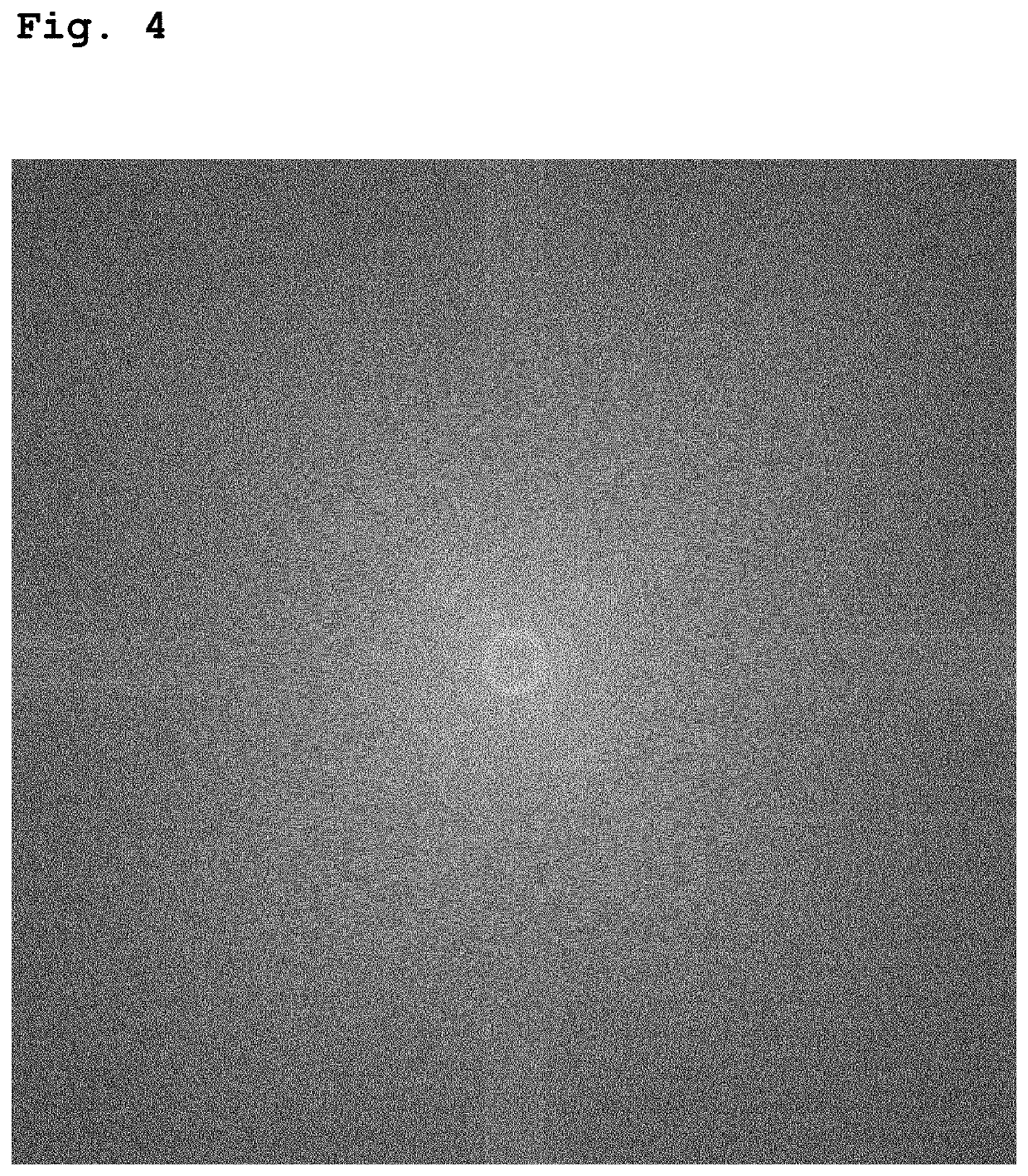Antifogging member
- Summary
- Abstract
- Description
- Claims
- Application Information
AI Technical Summary
Benefits of technology
Problems solved by technology
Method used
Image
Examples
example 1
[0032]There was prepared a random copolymer (produced by Polymer Source. Inc.) made using polystyrene (hereinafter referred to as “PS” in an abbreviated manner as appropriate) and polymethyl methacrylate (hereinafter referred to as “PMMA” in an abbreviated manner as appropriate) and containing a hydroxyl group at an end thereof. The random copolymer was dissolved in toluene to obtain a random copolymer solution.
[0033]Further, there was prepared a block copolymer (produced by Polymer Source. Inc.) made using PS and PMMA, as follows. The block copolymer was dissolved in toluene to obtain a block copolymer solution.
Mn of block copolymer=1,010,000
Volume ratio between PS segment and PMMA segment (PS:PMMA)=53.9:46.1
Molecular weight distribution (Mw / Mn)=1.18
[0034]The volume ratio between the PS segment and the PMMA segment (the PS segment: the PMMA segment) in the block copolymer was calculated on the assumption that the density of polystyrene was 1.05 g / cm3 and the density of polymethyl m...
example 2
[0043]The antifogging member was produced similarly to Example 1 except that the time of solvent annealing process performed on the block copolymer film and the degree of swelling of the block copolymer film were changed and that the concave-convex depth of the surface of the Si wafer was changed by adjusting the conditions for dry etching performed on the Si wafer.
example 3
[0044]The antifogging member was produced similarly to Example 1 except that the concave-convex depth of the surface of the Si wafer was changed by adjusting the conditions for dry etching performed on the Si wafer.
PUM
| Property | Measurement | Unit |
|---|---|---|
| Fraction | aaaaa | aaaaa |
| Angle | aaaaa | aaaaa |
| Depth | aaaaa | aaaaa |
Abstract
Description
Claims
Application Information
 Login to View More
Login to View More - R&D
- Intellectual Property
- Life Sciences
- Materials
- Tech Scout
- Unparalleled Data Quality
- Higher Quality Content
- 60% Fewer Hallucinations
Browse by: Latest US Patents, China's latest patents, Technical Efficacy Thesaurus, Application Domain, Technology Topic, Popular Technical Reports.
© 2025 PatSnap. All rights reserved.Legal|Privacy policy|Modern Slavery Act Transparency Statement|Sitemap|About US| Contact US: help@patsnap.com



